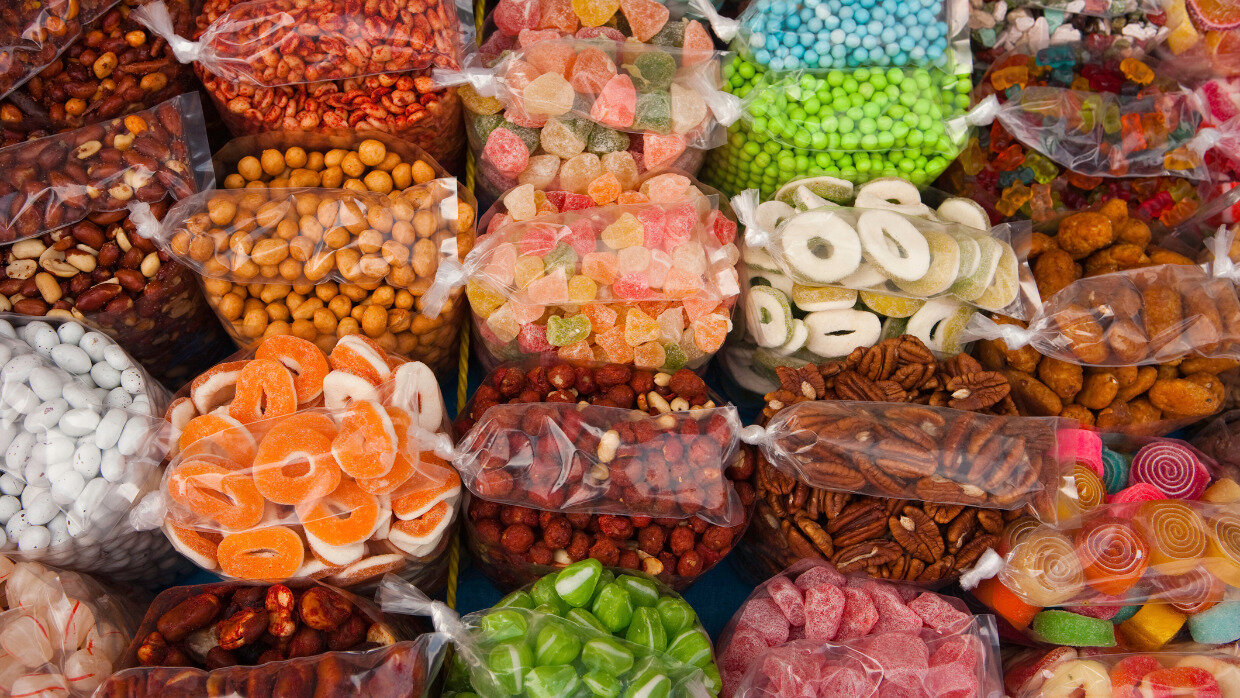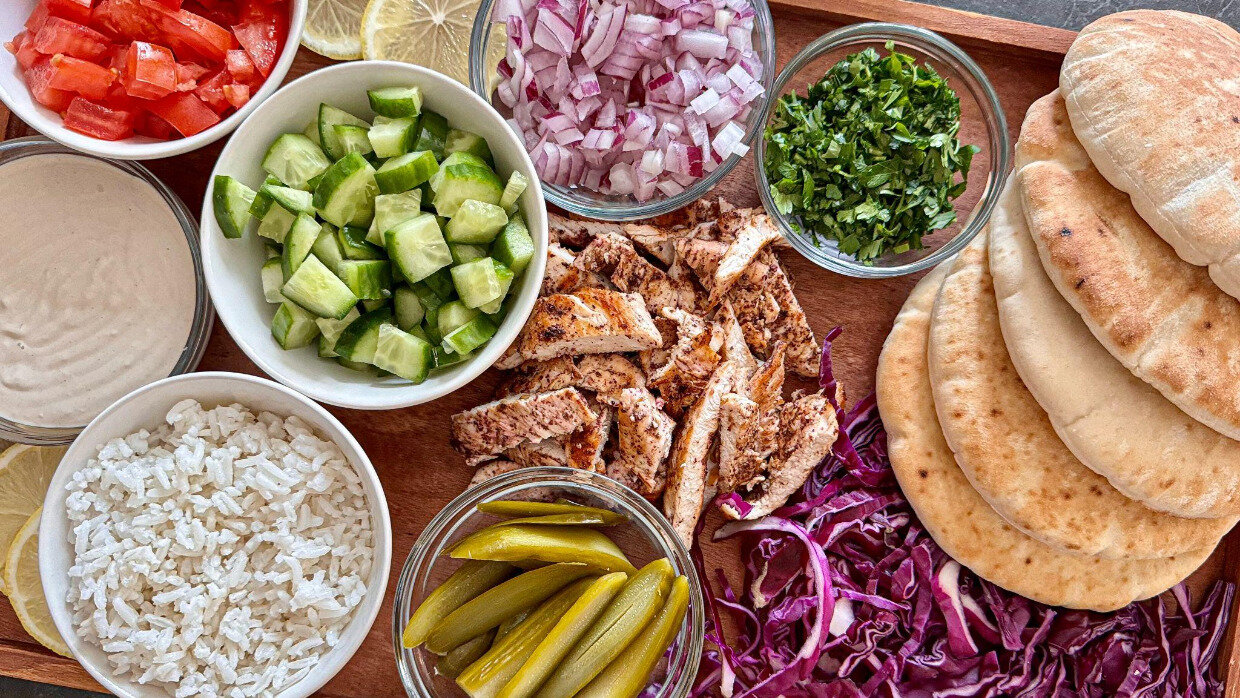In today’s world the term “sweet tooth” cannot be easily defined. For fans of Netflix’ epic adventure series with the same name, it is an apocalyptic view of the world that features a soulful child who is part human and part deer. However, in my family, it always meant that a meal was not complete, a party was not fully celebrated, or an occasion wasn’t truly marked without a morsel of chocolate, something gooey and delectable, or a bite laden with sugar. Perhaps it is in our Jewish DNA to have a sweet tooth, one that can be satiated where the only peril is not a dystopian future, but a few extra calories.
That brings us to candy land, not the Milton Bradley game, but the world of Jewish confectioners. While four out of five dentists might not want us to explore this rich world, the fifth would beg us to continue this deep dive into how and why candy and Jewish immigrants became intrinsically entwined.

The connection between Jews and chocolate dates back centuries to when Jews, fleeing the inquisition in Spain, found refuge in France. It was there that they began pioneering the chocolate industry. Additionally, Jewish people in Europe were integral in sugar production. It seemed natural that these two interests would align and the art of candy making traveled with them to America. A prime example would be Stephen Klein who arrived in New York in 1938. In Austria, Klein was a candymaker, and he brought his expertise here. He was quoted as saying “When I came to this country, I was surprised to see how candy was sold here…I saw a better, tastier, a more different candy had to be made…I know what chocolates to blend, how to control taste…All the pieces should look good- no chazerei.(junk)” Like so many other immigrants, Klein started as a peddler making candy at night in his apartment kitchen and then selling them by day. He began an enterprise that still thrives known as Barton’s- yes that candy company. When Klein opened his Herald Square store, he had a chorus line of dancers and a legendary reputation. The Department of Transportation even awarded him special dispensation to have a concession stand at Grand Central terminal, despite the fact he would be closed on the Sabbath.

Chocolate is not the only candy over which Jewish immigrants imprinted their techniques and talents. Travel across the East River to Brooklyn where another Austrian immigrant was making a name for himself as a confectioner. Herman Herer created a unique candy in 1912 on Coney Island. Trying to make the perfect marshmallow, he added too many egg whites and instead created taffy. His path crossed with a Turkish-Jewish immigrant who was also making taffy on the first floor of his home, with his workers living above him on the third floor. This craftsman eventually bought out Herer and rebranded the company with his family name, Bonomo. Yup, when you smack that stick of taffy on the side of a table, you have two Jewish immigrants to thank.

The impact of Jewish merchants extended to other forms of candy such as Bazooka bubblegum, the brainchild of Morris Chigorinsky, who emigrated from Russia to New York in 1891. Taking an unusual path, Chigorinsky was initially involved in the tobacco industry, but after WWI he shifted his focus to chewing gum. It was his family that established Topps and developed Bazooka, with its classic and properly credited bubblegum pink color. Those of a certain age might even recall the folded comics that were part of the gum experience. Those were added in 1947. The Chigorinsky family were considered royalty in Crown heights both as manufacturers of tobacco and chewing gum- strange bedfellow to say the least.

Speaking of chewy, we cannot forget Leo Hirschfield, another Austrian immigrant who came to New York in 1896. You have to wonder how after the 1900s Austria had any candy left to eat. Hirschfield had a delightful daughter named Clara who he affectionately called Tootsie. You don’t need to be a culinary historian to figure out that he was the developer of the Tootsie Roll. His candy, known for its rich brown color and thick jaw-hingey texture, would become the first individually wrapped candy not just in New York, but in America. It was truly serendipitous that Hirschfield developed his candy at the same time Sam Born was working on his contribution to the sugar rush. Arriving in New York in 1910, Born invented the Born Sucker Machine. No, that is not the same as P.T. Barnum’s claim that a sucker is born every minute. Sam’s invention inserted sticks into candy, creating lollipops. He also transformed the Tootsie Roll into the Tootsie Pop, much to the delight of every child and chagrin of every parent. Born, who recently passed away, went on to create a variety of candies and is best known for his Easter peeps. I’m sure he would have loved to make a Passover friendly version perhaps in the shape of one of the plagues.

Speaking of Passover, there was never a seder at my home that wasn’t finished with a tray of chocolate covered raspberry jellies cozying up to macaroons and flourless sponge cake. Those candies that come in rings or marshmallow twists (which my mom would always pop in the freezer) were the brainchild of Nathan Radutzky, a Ukrainian immigrant who arrived on the lower east side in the early 1900s. There he made his product in a garage and peddled it from a pushcart. He moved his enterprise to Brooklyn and seriously expanded the business. Not only did he make a variety of chocolate covered candies, but he produced quality halvah.
In Arabic, halvah means sweet, and it was the darling of the appetizing store, displayed beside the dried fruit and roasted cashews. While some dislike the chalky texture of halvah, Radutzky turned it into an art form. There’s even a pipeline running under a street in Brooklyn where tahini flows to keep his factory constantly pumping out this middle eastern treat. You might not know the name Radutzky, but I bet you’ve heard of Joyva, the company he began. Known as “The House that sesame built” Joyva is the largest producer of halvah worldwide.
It’s no wonder with all these sweet connections that the theme of so many Jewish lifecycle events revolve around candy. Just this past April, we wished each other a Zissen (sweet) Pesach. On the New year we mark the season with honey and at Bar and Bat Mitzvahs candy is tossed, sometimes ferociously at the Bar/Bat Mitzvah girl or boy in celebration of their achievement. Jews and candy go together like marzipan and little fruit shapes. Hoping their history continues to be intertwined for many sweet years to come.
You can make your own...















